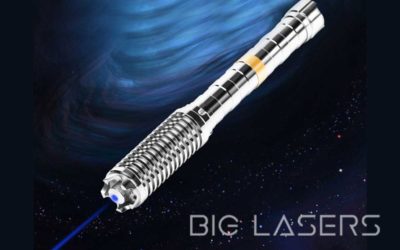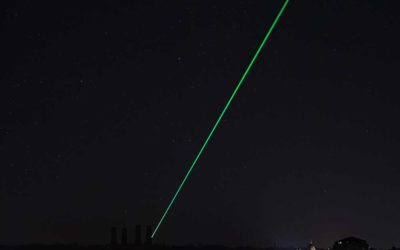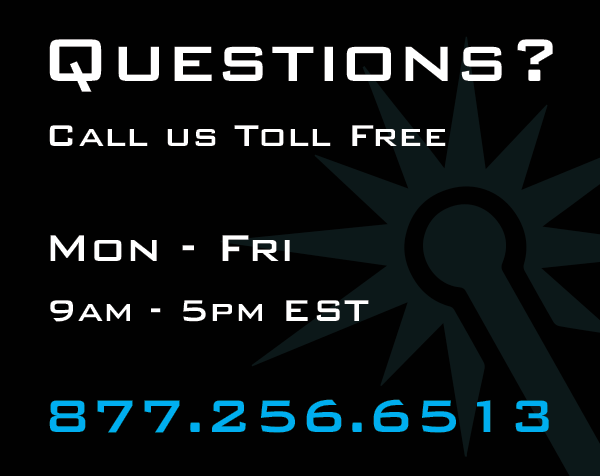If you are new to the world of lasers and handheld light technology, you may be asking yourself a few different questions when viewing certain models. With so many different items to choose from like: power ratings, wavelength colors, classes, duty cycles, battery varieties, accessory options, safety devices, and others; it can be a bit overwhelming knowing which handheld laser will be best suited to your needs.
Here we will not be looking at colors or accessory options, instead let’s look at a major different between different laser pointer: their Class.
Understanding Laser Classes

Hand Held Laser Pointers
Laser classifications are broken down into different power sectors and range from Class 1 (lowest power) to Class 4 (highest power). The classification any laser has is directly related to the beam output power which it is able to produce. Let’s take a look at each class:
- Class 1: extremely low power, for visible light the beam emits at 0.39mW or less. These beams are not hazardous to the human eye from direct exposure or from reflected exposure. There is no skin burn hazard and no material burn hazard.
- Class 2: low power, for visible light the beam is less than 1.0mW. Safe for unintentional exposure less than ¼ second. Do not stare at the beam. No skin burn hazard and no material burn hazard.
- Class 3a: low power, visible beam ranges from 1mW to 4.99mW. Avoid direct eye exposure. Unintentional direct or reflected exposure risk to the eye is low. No skin burn hazard and no material burn hazard.
- Class 3b: low to medium power, for visible light ranges 4.99mW to 499.9mW. Avoid direct eye exposure. Avoid reflected eye exposure. Generally safe, avoid staring at the beam or “dot” at close ranges. Can heat the skin if held long enough at close range (higher end of power spectrum over 200mW). Can burn materials if held long enough at close range (higher end of power spectrum over 200mW).
- Class 4: high power, visible light ranges from 500mW (0.5W) or more. Dangerous to the unprotected eye or skin exposure through direct, reflected, or scattered radiation. Poses a severe eye threat if used improperly (always wear your goggles when using a class IV laser). Do not stare at the beam or “dot” on a surface. If you see a sustained after image of more than 10 seconds, you are using the laser unsafely, wear your goggles. Can instantly burn skin (avoid direct exposure). Can instantly burn materials (avoid exposure to susceptible materials. Wear safety goggles.
As you can see the different laser classes vary greatly from Class I to Class IV.
What Laser Pointer Class Should I Buy?
We’ve seen that handheld laser pointers can range in powers from relatively benign to potentially dangerous when used improperly. The class and power of the laser you need will depend greatly on the intended application of the laser itself. So, what will you use the laser pointer for? This is an important piece when looking to buy a laser pointer online. Let’s see some of the most common uses for class III and class IV lasers.
Astronomy Lasers + Nighttime Use
Here you’ll have much more wiggle room in choosing the right laser pointer for astronomy and stargazing use. Any laser 5mW or above will be ideal for astronomy and especially in 532nm green where 5mW is visible at nighttime. So, a class III laser will be perfect for nighttime use.
But what about a class 4 laser for nighttime use?
A class IV laser which is higher in power than a class III laser will be even more visible at nighttime. This means you can more easily point out constellations and other objects.
Ideally, for astronomy lasers you want to go with a minimum of 50mW (class III) but can go anywhere upwards from there as well.
Laser Pointer Daytime Use
Using lasers during the daylight hours will require a bit higher power in comparison to nighttime laser use. We have been getting lots of request for bird repellent lasers and goose control laser pointers lately. But not every single hand held laser we offer will be suitable for daytime use. As a rule, you’ll want to go with a minimum of 200mW in 532nm green. Lower power or different colors will not be as visible in comparison to a green beam 200mW or higher.
Your best bet for daytime use is to go with the highest laser power your budget will allow. A blue laser over 1,000mW will be great and any green laser over 200mW will work as well. You will get a much better daytime impact (especially for geese control) if you go with 500mW green in power or more.
Remember that purple laser light at 405nm is the least bright laser color at the same power. Meaning a 100mW green laser will be 7 times brighter than a 100mW purple laser. For nighttime use this fact is less important.
Note: see our right up on Goose Control Hand Held Lasers here.
Choosing a Laser Pointer
Now that you know the differences of laser classes and what power classifications will be suitable for daytime and nighttime use, your next step is choosing a model. Different laser pointers have a range of different features so you should consider what will be suit your needs.
- Focus Adjustment: this is a great option when you want to widen or thin out the beam. This is ideal for burning lasers as you can focus the beam to increase the intensity or for applications like goose control to widen the beam.
- Key switch Safety Mechanism: if you have small children or want to make sure the laser is not being used without your supervision, go with a keyswitch laser pointer. They cannot be turned on without the key and make for a safer laser.
- Momentary On/Off Switch: this is the power button that is traditional on laser pens. “Momentary” means that you must hold the beam down to use the laser.
- Constant On/Off Switch: this power button is similar to most flashlights where the button is in the tail cap of the laser and you click the laser “on” to turn on and must click it again to set it to “off”.
- Duty Cycle: this will signify how long the laser can be kept on for a single go. If the duty cycle is “90 seconds” do not keep the laser on longer than 90 seconds. If the duty cycle is “continuous (CW), you can use the laser for minutes at a time.
- Lens Attachments: some laser pointers have laser lens attachments included or available as an accessory. These will split the beam to create visual effects like kaleidoscope, star, line, grid, etc.
Be sure that whichever laser you go with, you’re aware of the safety instructions and that you CANNOT aim at aircraft, motor vehicles, human beings, public transit, stadiums, concerts, etc.
Buy a Laser Online
Be sure to conduct your own research into any individual laser or laser provider you’re considering. Not all lasers are created equal and neither is those who manufacture them. Here at Biglasers.com we stand by our products and therefore have a 1-year warranty on each and every handheld laser model we offer. See our selection of Hand Held Laser Pointers, here.
If you have questions do not hesitate to give us a ring 877-256-6513





